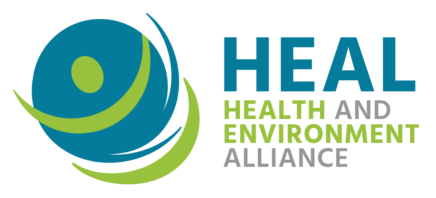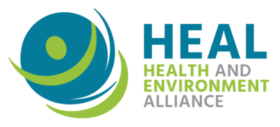Press note: The Forever Lobbying Project investigation finds that the clean-up of per- and polyfluoroalkyl substances (PFAS) contamination in Europe could cost 100 billion euros annually. Health-related costs for PFAS exposure are estimated to reach up to 84 billion euros annually. With these revelations, combined with the mounting scientific evidence on PFAS’ grave health impacts, it is clear that the European Commission must ensure a robust EU-wide PFAS restriction and come up with a plan to address these costs as part of the Clean Industrial Deal.
Today renowned epidemiologist Dr. Shanna Swan is releasing a new book alerting about the threats posed by hormone disrupting chemicals and our modern environment that are imperiling reproductive health, fertility, and the fate of humankind. Building on more than 25 years of research on the associations between exposure to environmental pollutants and health effects, “Count Down – How our modern world is threatening sperm counts, altering male and female reproductive development and imperiling the future of the human race” is a clarion call for more protective public policies and changes in our modern way or living [1].
Count Down, hitting bookstores today, paints a bleak but important picture about how chemicals in our environment and unhealthy lifestyle practices are disrupting our hormonal balance and causing varying degrees of reproductive havoc. These trends are contributing to the current decline in sperm count, harm fertility, and are leading to long-term and cross-generational health problems even after one has left the reproductive years.
Dr. Swan presented her new book during a webinar hosted by the Collaborative on Health and the Environment’s EDC Strategies Partnership on February 23rd, 1PM US Eastern / 7PM Central European time [2].
HEAL also invited Dr. Swan for a special webinar and panel discussion with Dr. Majorie van Duursen (Professor of toxicology at the Vrije Universiteit of Amsterdam) and Dr. Lola Gómez Roig (Head of the Obstetrics and Gynaecology Department at the Hospital Sant Joan de Déu and a member of the International Federation of Gynecologists and Obstetricians – FIGO). A recording of this exciting event, that brought together perspectives from epidemiology, toxicology and clinical experience, is now available online.
Her 2017 publication of a meta-analysis, which grabbed media attention across the world, found that among men from North America, Europe and Australia, sperm concentration had declined more than 50% in less than 40 years [3]. Dr. Swan already presented EU policy-makers with epidemiological evidence about the impacts of endocrine disrupting chemicals (EDCs) on human health in 2012 – nearly a decade ago [4]. Despite the European Union taking steps to create safe and toxic-free environments, to date these findings have yet to be translated into tangible and health-protective change to reverse current trends.
While associations between exposure to endocrine disrupting chemicals (EDCs) and adverse reproductive health outcomes are increasingly well-documented, few research projects are currently addressing them. The FREIA project – Female Reproductive toxicity of EDCs: a human evidence-based screening and Identification Approach – has started exploring just how endocrine disrupting chemicals (EDCs) affect female reproductive health, and aims at developing test methods to identify EDCs that do so [5]. Elsewhere, the ATHLETE project is aiming to better understand how the environment can impact human health, from pregnancy to adolescence, by studying the human exposome [6]. Meanwhile health groups like the Health and Environment Alliance (HEAL) and federations of professionals such as the Federation of Gynecology and Obstetrics (FIGO) are spreading more awareness around exposure to toxic chemicals during and after pregnancy, and other vulnerable life stages [7].
Count Down: How our modern world is threatening sperm counts, altering male and female reproductive development and imperiling the future of the human race is a wake-up call and a must-read for anyone concerned about the future of our collective environmental health. The book features infographics that are available upon demand, including the infographic ‘Low Doses Matter’ published by TEDX – The Endocrine Disruption Exchange and HEAL in 2019 [8].

